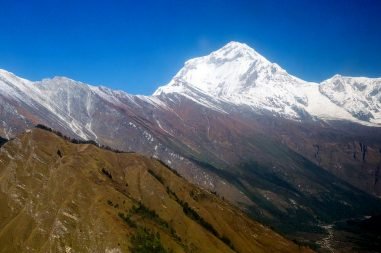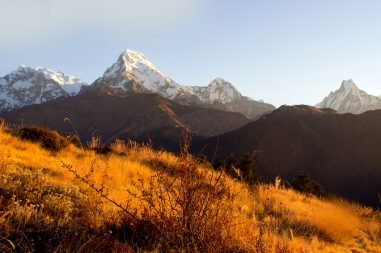Swayambhunath Stupa is an ancient religious architecture atop a hill in the Kathmandu Valley, west of Kathmandu city.
The Tibetan name for the site means ‘Sublime Trees’, for the many varieties of trees found on the hill. Swayambhunath Stupa watches over the valley from a height of 75 m from the average level of Kathmandu. It is one of the worlds most glorious Buddhist Stupa, it is said to be 2000 years old. Visitors often call it “Monkey Temple†as there are holy monkeys living in parts of the temple in the north-west. The Swayambhunath complex consists of a stupa, a variety of shrines and temples, some dating back to the Licchavi period. The main structure brick and clay which supports a lofty conical spire capped by a pinnacle of copper gilt. There are the all-seeing eyes of Lord Buddha on the four sides of the spire.
The sleepy, all-seeing Buddha eyes that stare out from the top have become the quintessential symbol of Nepal. Being situated seventy meters above the level of the valley, the hill of Swayambhunath is a mosaic of small stupa and pagoda temples. It is the most ancient and enigmatic of all the holy shrines in Kathmandu valley and its establishment is linked to the creation of Kathmandu valley out of a primordial lake. Legend has it that the history of the Valley began with the draining of an ancient lake by an Enlightened Being to reveal the Valley and a lotus flower was transformed into the hill and the shining light became the stupa itself.
Swayambhunath worshippers include Hindus, Vajrayana Buddhists of northern Nepal and Tibet, and the Newari Buddhists of central and southern Nepal. The stupa represents Buddha’s mind. To visit a stupa is said to be the same as meeting a Buddha in person. It offers peace, freedom, and joy to the whole world and ultimately helps us to obtain perfect enlightenment. It is a World Heritage Site and one of the holiest Buddhist sites in Nepal.










